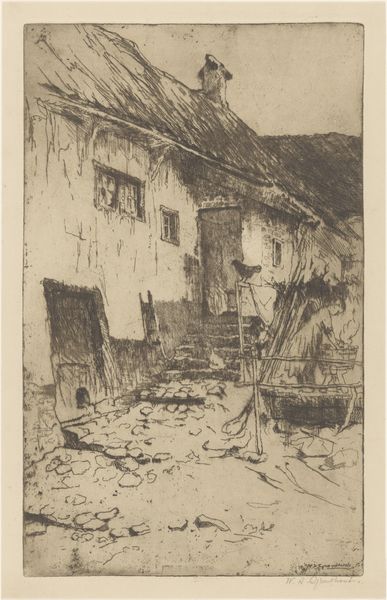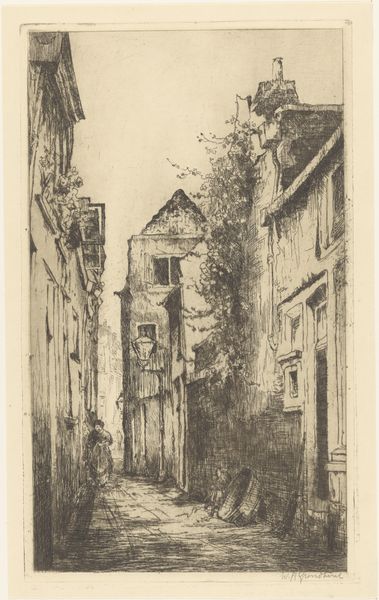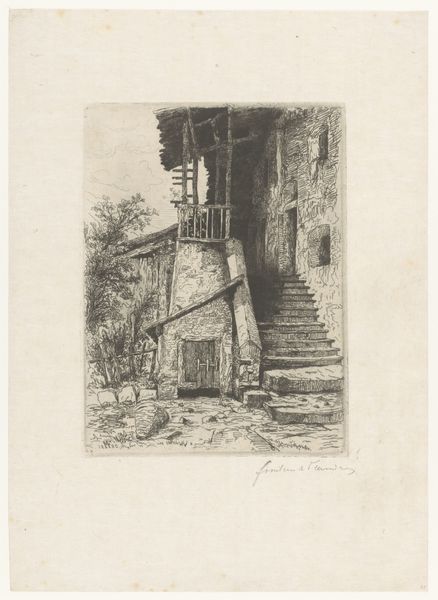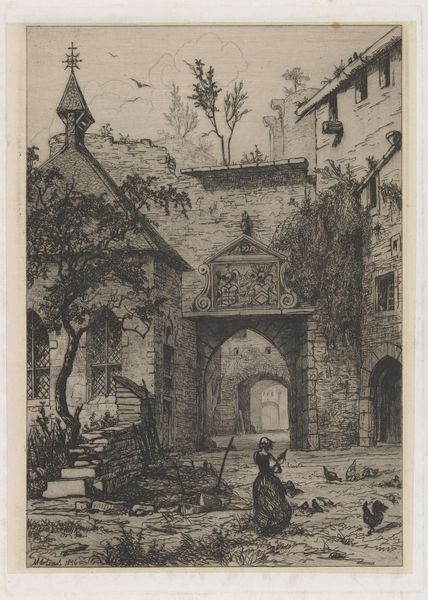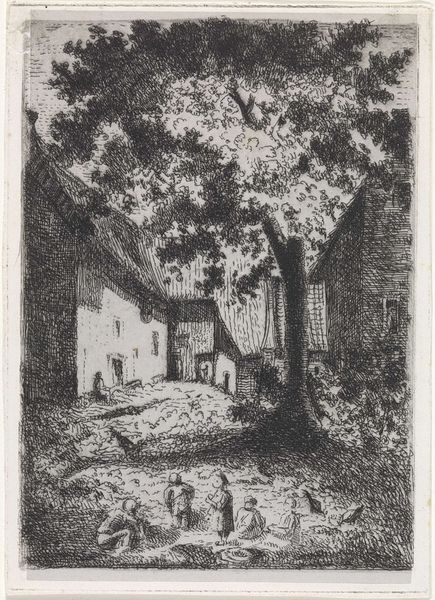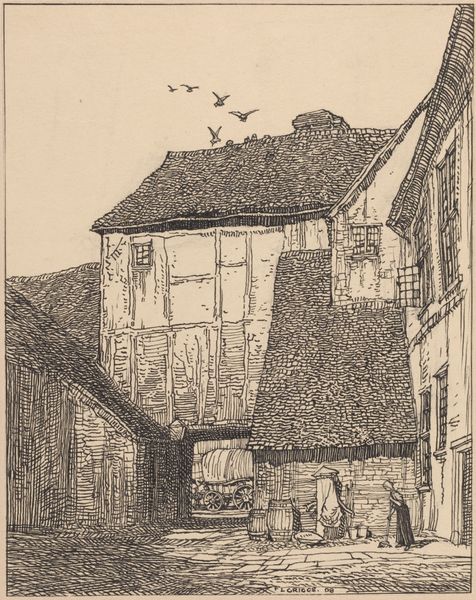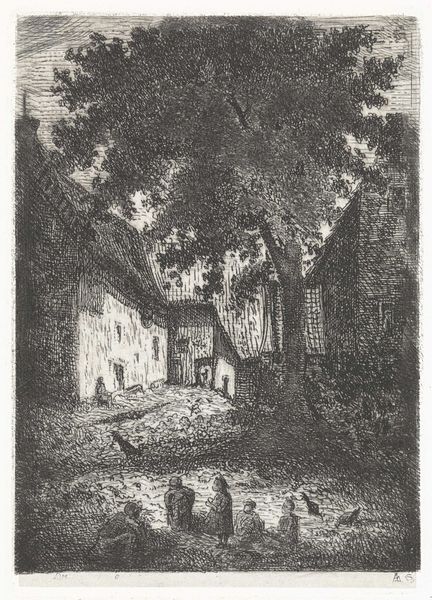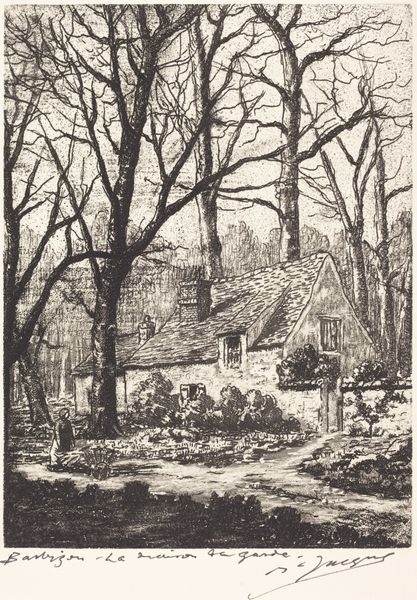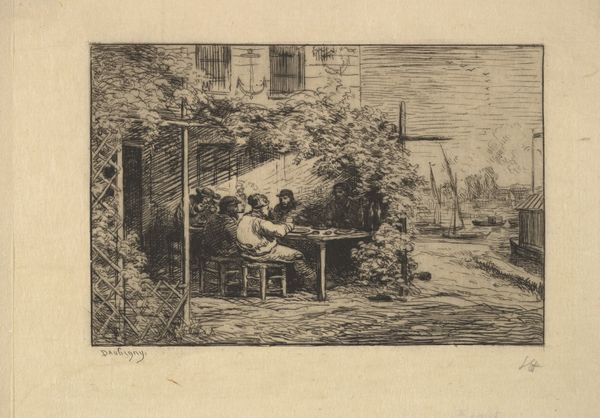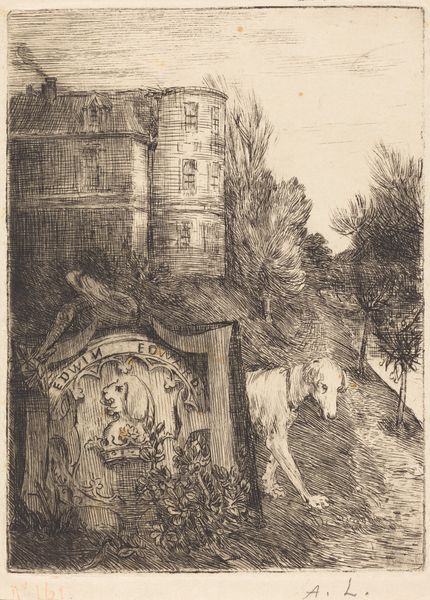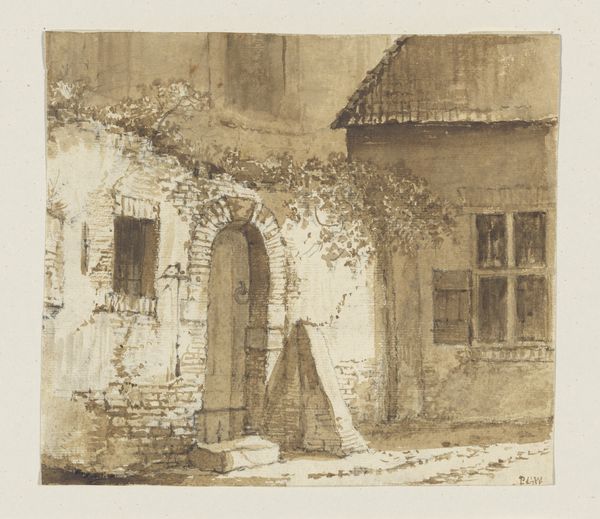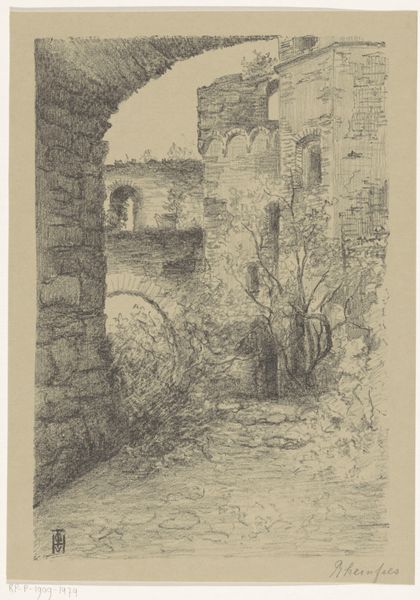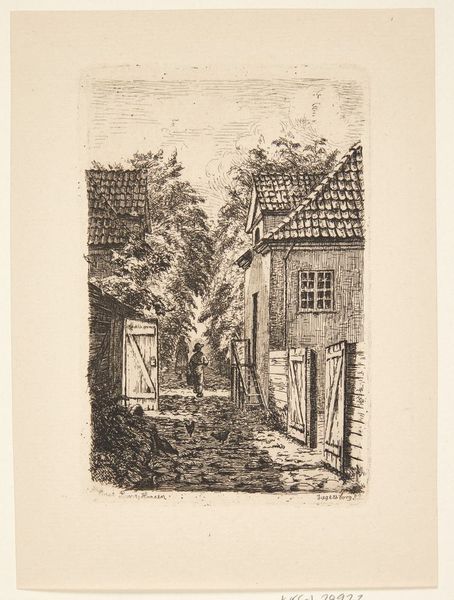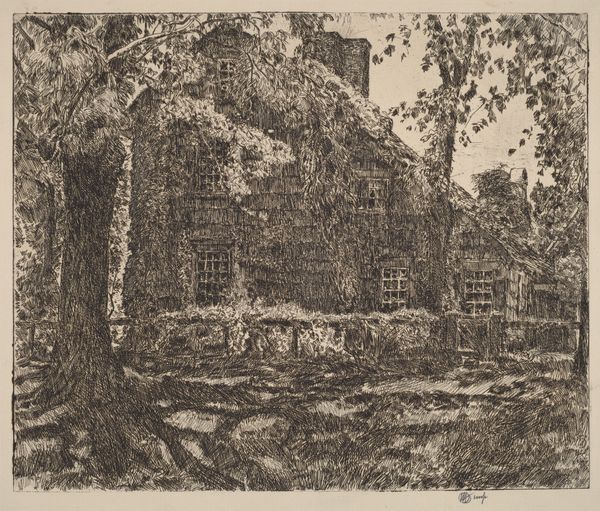
Dimensions: height 218 mm, width 162 mm
Copyright: Rijks Museum: Open Domain
Editor: Right now, we're looking at Hendrik Kobell’s "Begroeide ruïne," which translates to "Overgrown Ruin," made sometime between 1761 and 1779. It’s a drawing done in pen and ink. I’m immediately struck by how melancholic it feels – like a forgotten corner of the world, rendered with such fine detail. What catches your eye most in this piece? Curator: Oh, melancholic is spot on! It whispers stories, doesn't it? The sheer detail—all those lines Kobell used—almost makes you feel the textures: the rough stone, the creeping ivy. I wonder, looking at this, if Kobell ever felt like one of those tiny figures, contemplating something much larger than himself. I am drawn in by the relationship between nature reclaiming the stone and human form. How do you imagine those folks relate to the setting? Editor: I hadn’t thought of that – feeling like one of those figures. Perhaps they are visitors like us, witnessing the passage of time. Do you think the "Ruin" is meant to be symbolic of something? Curator: Everything whispers something, doesn't it? Ruins are beautiful because they’re blatant about it. This one speaks of time, and decay and… transformation. It suggests nature persists long after we are gone, a constant cycle of build, destroy, and rebirth. Makes you want to hold things loosely, you know? The detail draws the eye everywhere to create visual wonder, not a sad reflection of loss. Do you agree? Editor: That makes so much sense when you put it that way. The cycle isn't about what is lost but the enduring process. It gives a whole new feeling to the piece! Curator: It really does. The Romantics loved a good ruin, precisely because of that layered meaning. Thanks, this makes me want to revisit my own relationship to that abandoned birdhouse in my garden. Time to meditate.
Comments
No comments
Be the first to comment and join the conversation on the ultimate creative platform.
